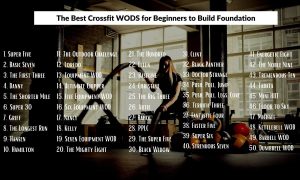
When it comes to achieving optimal results in bodybuilding, a well-structured training plan is vital. One technique that has gained significant popularity among athletes and fitness enthusiasts is periodization. Periodization refers to dividing your training program into specific time periods or phases, each with a unique focus to maximize progress and performance. In this article, we will delve into the concept of periodization in bodybuilding and guide you on how to plan your training effectively.
Understanding Periodization
Periodization involves breaking down your training into distinct phases, allowing for systematic variation and progression. Each phase serves a specific purpose and targets different aspects of your physique and strength development. The goal of periodization is to prevent plateaus, overtraining, and burnout by providing structure and direction to your workouts.
Typically, a periodized program consists of three main phases: the hypertrophy phase, the strength phase, and the power phase. Each phase can last anywhere from four to twelve weeks, depending on individual goals and preferences.
Hypertrophy Phase
The hypertrophy phase is the foundation of a periodized program. As the name suggests, it primarily focuses on increasing muscle size through high-volume training. During this phase, you will perform exercises with moderate to high rep ranges, usually in the range of 8 to 12 reps per set. The objective is to create metabolic stress and muscle damage, stimulating muscle hypertrophy.
Key considerations during the hypertrophy phase include proper nutrition, sufficient rest, and progressive overload. Ensure you consume enough protein to support muscle growth and allow for adequate recovery between workouts. Additionally, gradually increase the weights you lift to stimulate continuous adaptations in your muscles.
Strength Phase
The strength phase follows the hypertrophy phase and transitions your focus from muscle size to pure strength development. The primary goal is to increase the weights you can lift for compound exercises like squats, deadlifts, and bench presses. During this phase, the rep ranges are usually lower, typically between 4 to 8 reps per set, allowing for heavier loads.
To ensure maximum gains during the strength phase, prioritize compound exercises and progressive overload. By consistently increasing the resistance, you challenge your muscles and nervous system to adapt and become stronger. Adequate rest and recovery remain crucial to replenish energy stores and repair muscle tissue.
Power Phase
The power phase is the final phase of the periodization cycle and focuses on developing explosive power and speed. This phase is essential for athletes aiming to improve their performance in sports or individuals seeking overall athleticism. The power phase involves utilizing lower rep ranges, typically between 1 to 4 reps per set, and focusing on explosive movements.
Incorporate exercises such as plyometrics, Olympic lifts, and speed drills during the power phase to enhance your power output. It’s important to note that this phase requires adequate warm-up and proper form to minimize the risk of injury. As always, progressively increase the intensity and volume while allowing ample recovery between sessions.
Planning Your Training
Now that you understand the different phases of periodization, let’s discuss how to effectively plan your training.
Set Clear Goals
The first step in planning your training is setting clear and measurable goals. Determine whether you want to focus on building muscle, increasing strength, improving power, or a combination of these factors. Having specific goals will help you tailor your training program accordingly.
Choose the Right Program
Once you have established your goals, select a periodized training program that aligns with your objectives. There are various resources available, including online programs, fitness apps, or hiring a qualified personal trainer to design a customized plan. Ensure the program includes all the necessary phases and provides guidance on exercise selection, volume, and intensity.
Progress Gradually
Progression is a key aspect of periodization. Gradually increase the intensity and volume as you move through each phase. This approach prevents stagnation and allows your body to adapt to the demands placed upon it. Avoid the temptation to rush through the phases or increase the weights too quickly, as this could lead to overtraining and injuries.
Monitor Your Progress
Keep track of your progress throughout the training program. Regularly assess your strength, muscle size, and overall performance. Monitoring your progress allows you to make adjustments if necessary and ensures you are on track to achieving your goals.
Adequate Rest and Recovery
Never underestimate the importance of rest and recovery. Your body needs time to repair and rebuild itself to grow stronger and avoid burnout. Make sure to prioritize quality sleep, proper nutrition, and incorporate rest days into your training schedule.
Conclusion
Periodization is a valuable tool for optimizing your bodybuilding training. By incorporating distinct phases such as hypertrophy, strength, and power, you can systematically enhance your muscle size, strength, and explosiveness. Remember to set clear goals, choose a suitable program, progress gradually, monitor your progress, and prioritize rest and recovery. With a well-planned and executed periodized training program, you can take your bodybuilding journey to new heights and achieve remarkable results.

